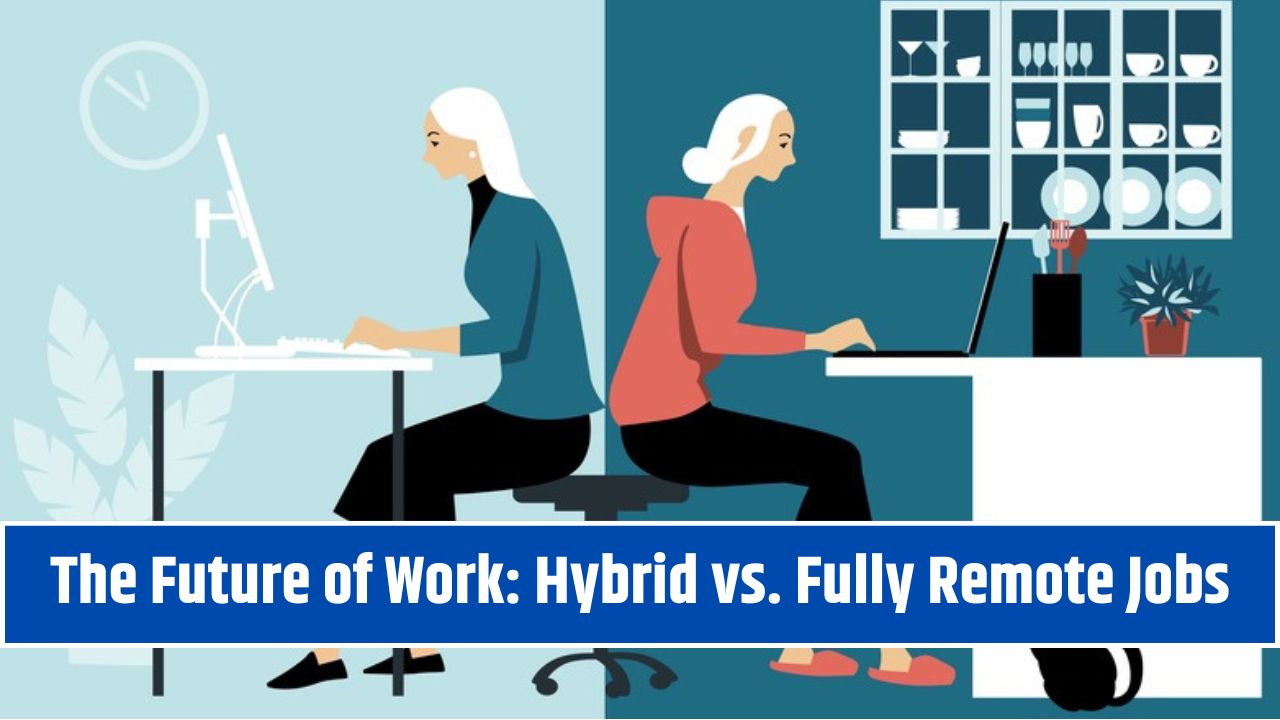Alright, let’s be real for a sec—working in pajamas used to sound like a dream, didn’t it?
But now, three years after “Zoom fatigue” entered the group chat, we’re all asking the same question: What’s the future of work actually going to look like? Is it hybrid? Is it fully remote? Is it us screaming into our Slack DMs at 2am while eating cereal out of a coffee mug?
Let’s talk about it.
Let’s Set the Scene…
Flashback to 2020: We were baking banana bread, hoarding toilet paper, and suddenly, everyone’s office became their kitchen table. Remote work went from a tech bro’s luxury to a global necessity.
Fast-forward to today? Some companies are calling folks back in (side-eye to you, Apple and Amazon), others are doubling down on remote-first culture (what’s up, GitLab), and then there’s the whole new species called hybrid—like the mullet of work structures. Business in the front (office), party in the back (home).
So what’s better? Which one is more productive, less stressful, more “future-proof”?
Buckle in, friend. I’ve lived both, researched both, and have the mental scars to prove it.
First: What Do We Mean by “Hybrid” vs. “Fully Remote”?
Let’s break it down real quick.
Hybrid Work:
You split your time between working from home and working in the office. Could be 3 days in, 2 days out. Or “come in when you feel like it.” It varies.
Fully Remote Work:
You never step foot in a company office. You might live 1,000 miles away from HQ. Everything happens online—from onboarding to Friday happy hour to that awkward all-hands with the CEO’s cat.
Personal Story Time: My Life Went from 9-5 to No-Commute Nirvana
I used to work at a startup where “flexible” meant you could leave by 6 if you skipped lunch. (Yes, that’s a true story. No, I’m not still salty. Okay, maybe a little.)
When the pandemic hit, suddenly everyone went remote. And guess what? I started sleeping more. Eating real food. My skin cleared up. I got more done in less time. I started walking during meetings. And I didn’t even think about pretending to be productive at 4:59 PM.
But after a year, something felt… off. I missed overhearing funny conversations. I missed those accidental “Hey, can I run this by you real quick?” chats. I missed people.
That’s when I realized: Remote is great. But maybe not for everyone and not forever. That’s when hybrid entered the chat.
Let’s Compare: Hybrid vs. Fully Remote (With No Corporate Jargon)
1. Productivity Levels
- Remote: Total control of your day. No one tapping on your shoulder. No commuting. Great for deep work (and sweatpants).
- Hybrid: More structure, but also more distractions. You might get more done at home—but in the office, collaboration’s easier.
Verdict?
If you’re a self-starter who loves quiet time, remote’s your jam. But if you thrive on team energy or spontaneous idea-storming, hybrid might win.
2. Company Culture and Human Connection
- Remote: Zoom parties are… fine. But they don’t replace “let’s grab coffee” vibes. Culture takes intentional effort.
- Hybrid: Face time can help relationships. Mentorship is easier. That “belonging” factor shows up more.
Verdict?
Hybrid makes it easier to feel like part of something. Remote requires more deliberate bonding—but it’s not impossible.
3. Location Freedom
- Remote: Move to Bali. Or a cabin in Montana. As long as you’ve got WiFi, you’re good.
- Hybrid: You’ll need to live within commuting range—so goodbye, dream cabin.
Verdict?
Remote wins here, hands down. No leash, no limits. Just good internet.
4. Cost (For You and Your Employer)
- Remote: Save on gas, dry cleaning, takeout lunches. Employers save on office rent.
- Hybrid: Still paying for that commute, still tempted by overpriced lattes. Companies often keep partial office setups.
Verdict?
Remote = cheaper across the board. But if your hybrid setup includes lunch and transit benefits? Not too bad.
5. Career Growth Opportunities
- Remote: You might be overlooked for promotions if leadership isn’t remote-savvy. Less face time = fewer chances to shine.
- Hybrid: Office presence still influences perception. “Out of sight, out of mind” is real, even if it’s unfair.
Verdict?
Hybrid gives you more visibility. Remote workers may need to work harder to be noticed and remembered.
What Do People Actually Prefer?
A 2024 Gallup poll said 59% of employees prefer hybrid, while 32% want to stay fully remote. Only a tiny 9% want to go back to full-time office life (and honestly, who hurt them?).
Most people want flexibility. That’s the keyword here. It’s not “remote vs hybrid.” It’s “do I have a choice?”
What About Managers and Employers?
They’re stressed. No lie. Managing a remote team is a different ballgame. You can’t measure productivity by butt-in-seat hours anymore (and honestly, you never should’ve). You’ve got to trust your people.
Some managers love the structure hybrid brings. Others are fully embracing remote tools and async workflows.
But the best ones? They’re listening to their team. They’re experimenting. They’re evolving.
So… What’s the Future Really Look Like?
Honestly? It’s probably not one or the other.
It’s not remote vs hybrid—it’s intentional flexibility.
We’re entering an era of customizable work experiences, where companies offer:
- Remote-first roles for certain departments
- Hybrid schedules with employee choice
- “Work-from-anywhere” months as perks
- Asynchronous collaboration tools that don’t require constant meetings
The 9-5 cubicle isn’t coming back (not fully, anyway). But neither is the “everyone stays remote forever” dream.
The future of work is going to be messy, creative, human, and (hopefully) driven by what actually works for people—not just policies and old-school expectations.
Which One Should You Choose?
That’s the question, right?
Ask yourself:
- Do I need face time to thrive?
- Can I focus without structure?
- Do I value freedom or team energy more?
- Will I feel lonely working solo for days?
- Do I trust myself to set boundaries at home?
No one-size-fits-all answer. But the good news? You don’t have to marry one model forever. Try hybrid. Try remote. Switch it up. The future of work is fluid—and that’s kind of exciting.
TL;DR
| Factor | Remote | Hybrid |
|---|---|---|
| Productivity | High (if focused) | Varies |
| Culture | Harder to build | Easier with in-person time |
| Flexibility | Max | Medium |
| Costs | Low | Higher |
| Growth | Can be tricky | More visibility |
Final Thoughts (Because You Knew I Was Gonna Get Deep Eventually)
You don’t just need a job. You need a life that works. The future of work shouldn’t just be about where you’re sitting—it should be about how you’re thriving.
Choose what makes your brain light up. Your calendar breathe. Your creativity show up in your inbox. That’s the future worth fighting for.




